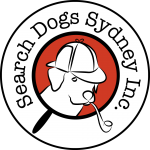Frequently Asked Questions
Can SDS train and use my dog for Search and Rescue?
SDS trains both the dog and the owner, not just the dog. The search dogs are trained and handled by their owners.
How do search dogs work?
A trained search dog can cover with its nose the same amount of ground it would take about 30 humans to search.
SDS trains dogs in two basic search disciplines, Trailing and Air scent.
Trailing dogs follow the trail of scent particles shed by a person. The scent trail is affected by wind and other weather conditions so the dog does not necessarily follow the person’s exact footsteps. Rather, the trailing dog may work parallel to the path the individual actually walked. They are able to smell an article of clothing recently worn by an individual and then find the person with the matching scent.
Air scent dogs detect scent particles that are carried in the wind from the missing person’s location. Several air scent dogs can be fielded on a mission to search different search sectors simultaneously.
How long does it take to train a search dog?
Air scent dog and handler teams typically train for 18 to 24 months prior to testing.
Trailing dog and handler teams usually train for 18 to 24 months prior to testing.
Dog handlers train approximately 300 to 500 hours per year to reach operational status with their dog. In addition to training with their dogs, the handlers are required to undergo many courses associated with Search & Rescue.
How old should a dog be to begin training?
Training may be started with dogs as young as 8 weeks, however no dog is fielded on search operations until it is 18 to 24 months of age, once they have reached physical and mental maturity.
Which breeds can be trained for search and rescue?
SDS trains a variety of breeds of dogs. We have successfully trained working dogs, herding dogs, sporting dogs, and mixed breeds. The breed is not as important as is the drive and personality of the individual dog. The dog must be eager to please, willing to approach strangers, non-aggressive towards people or other dogs, and have the stamina and endurance to withstand long hours of searching in any type of terrain.
While drive and personality is more important than breed the working type breeds of dogs do tend to perform best, such as Labrador Retrievers, German Shepherds, Kelpies, Border Collies and crosses of these.
How are our search dogs tested?
Once the teams have completed their 6 progress checks, the team then undergo a strict Operational Assessment, simulating Operational conditions. These tests are under the guidance suitably qualified independant third parties.
Once our teams are deemed Operational they are then assessed annually.
How strenuous is search and rescue for the handler?
A dog handler must be prepared to respond to missions with enough personally owned gear to be in the wilderness for at least 24 hours. The handler should be able to carry a 15 to 25 kg backpack in mountainous terrain and stay out overnight with minimal sleeping gear. A high level of fitness is necessary.
How is SDS funded?
SDS is funded solely by contributions and grants from individuals and corporations. SDS is a not-for-profit organisation and a registered charity. All donations over $2 are tax deductible.
You can sponsor one of our dogs today for just $30 per month.
What should I do if a family member goes missing?
Contact the Police. Provide them with as many details as possible. Current photo, medication, special needs etc. Do NOT wait. The sooner the search begins the faster resources can be deployed.
Once you have contacted police you can contact us directly on 0412 524 715 for further assistance.

